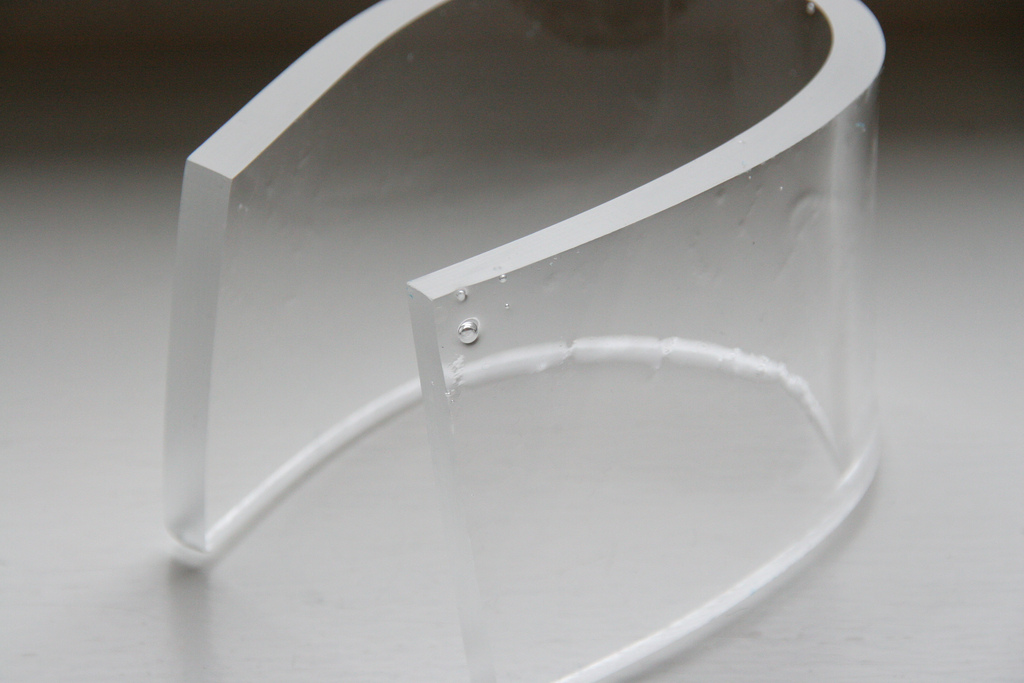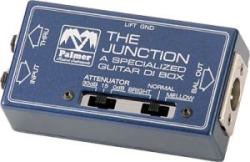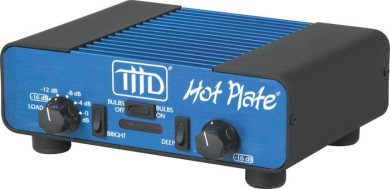This is part 4 of a 4 part instructional series on how to get the best possible live tone.
Part 1 – Introduction & General Information
Part 2 – Your Guitar
Part 3 – Amplification and Effects
Part 4 – Live Sound at the Gig
Sound on Stage
Getting a good tone out of your gear is only half the battle won. The interaction of your guitar sound with the PA system and on-stage monitoring can also play a big part in determining how good your tone is and even effects the playability of your instrument.

If you’ve played live more than once then you may already have come to the conclusion that each gig is a new challenge. Often, from venue to venue, the sound can change radically. There’s no particular “comfort zone”, but that’s what makes it fun and interesting. If every gig ended up being exactly the same, it would become an extremely monotonous experience to perform live.
In terms of on-stage and front-of-house audio, you will find that you get good and bad days. On the rare occasion, you may find that you have awful stage sound which can be really discouraging to your performance. Ultimately you want to strive for only good days, and there are steps you can take in order to achieve this. However, you want to also work towards not being thrown by bad sound when it crops up. Learn to ignore it and show the audience you’re having fun.
One thing to keep in mind is that the front-of-house sound can often be radically different to what you’re hearing on stage. The sound that your audience is hearing will in most cases be a lot better to what you’re hearing from your stage reference. This is why most professional acts have a dedicated stage engineer, responsible for making sure that the band is comfortable with the levels on stage. Many bands, however, aren’t fortunate in this regard.
What you ultimately want to strive for is great sounding stage monitoring that can inspire and add to your performance. It’s a lot easier to play those intricate solo parts if your amp is soaring behind you. A badly equalized signal on the mixer-end can, however, be merciless in terms of your on-stage and FOH sound.
Sound Check
You may find that you will need to readjust settings on your amplifier when you use it in a different venue. The room can make a major impact on your amplifiers tone. Often guitar players will get used to their sound at the rehearsal venue only to end up with a completely altered tone at the gig.
My recommendation is to still dial in a good tone prior to the gig. It’s important to understand what the knobs on your amp are doing and how they affect your sound. This allows you to make changes much more quickly and accurately at the gig.
At best, you want to avoid adding guitar into your monitor speaker mix. You should always strive to use your amp as a personal stage monitor, as it will provide the most accurate referencing in terms of your guitars output. It’s crucial that you use a tube amp to achieve this and that you follow the advice in part 3 of this series to dial in your settings.
Performing Musician Magazine asked Steve Lukather how he approaches his sound checks. Steve Lukather is a renowned session guitar player who has worked with Michael Jackson, Toto, Elton John, Madonna, as well as many others.
PM: How do you approach your soundchecks and what do you look for sound-wise?
SL: “First, you have to have a great crew. We’ve been fortunate to have worked with the very best guys, so it makes it all easier, especially the guys that we have been working with for many, many years. And the second thing is you’ve got to have guys that know how to talk the talk. I know how to talk frequencies and the like. Once we start a tour and we get it set, soundchecks are almost unnecessary, especially if you’re carrying your own system. And if you change the type of venues you’re playing — like going from an arena to a club — obviously, you will need to make slight changes and make sure it is all rung out, like there is no feedback. I don’t tend to use monitoring very much. A little keyboard and a lot of vocal is all I need. And I make sure that the band is balanced on stage. If everything is so loud on stage, it will affect the front-of-house mix. People think monitors are supposed to sound like the record. Well maybe, if you’re using in-ears. But in-ears have screwed up my hearing in the first place. I got tinnitus wearing those loud headphones all those years in the studio. I use earplugs now, as they cut down 20dB in each ear, so my tinnitus doesn’t get worse. So, for me, getting a real good balance of the band playing on stage and where you can hear everybody’s instrument is very important.”
PM: What effective sound strategies do you employ when it comes to the differing room acoustics of various venues?
SL: “I play with the same volume whether I’m in a club or an arena. That is the whole key to it all. It is to maintain that whole rehearsal balance. Once you have it all dialed in, everything will sound a lot louder, especially in a big hall, because the PA is being pushed and it is pushing it out a lot harder. But on stage, it shouldn’t change; it should all be balanced.”
PM: Do you like to hear your backline or is it mainly coming through the monitors on stage?
SL: “I don’t like to have a direct shot hitting me in the face. I don’t ever put guitars into my monitors ever! I have my small 6 x 12 rig; three 2 x 12 cabinets, one dry one and two wet ones, placed left and right so they can have complete control out the front, depending on the size of the room. And I have it down just below my knees. It never really hits me in the head. I don’t like that direct sound. It’s like people who mike up amplifiers: they stand in there, listening to the room, yet you put your ear to that speaker and it’s going to blow your ear off! If you’re approaching recording live, it is completely different. In a live arena, you have to take the ambience of the room under consideration, while in a recording studio you do not. They are two completely different mindsets.”
Amp Placement
There is no definitive answer on where to place your amp on the stage. It really comes down to personal preference. I find that a well dialed in tube amp can go along way in being heard from many different angles. If you follow the advice in part 3 of this series, you shouldn’t find it too difficult to dial in a sound that can easily cut.
One thing to take note of is that you don’t want your ears to be necessarily directly in front of your guitar amplifiers speakers (if you can help it). This will result in an overly bright sound reference, which is not always an accurate representation of how your amp sounds in perspective of the room. It’s also why I believe that angling your amp towards your head is not necessarily good advice. Once again it comes down to dialling in your amp EQ settings effectively.
If you’re really struggling to hear yourself, you can try use an amplifier stand to raise your amp. I’ve also had success with placing amps on a beer crate or two. You shouldn’t have this problem with 4×12 cabinets though.
Microphone Placement
You want to make sure that you’re sending an accurate signal to the FOH mixer.
Even if you’re used to a sound tech miking up your amp for you, it’s still a good idea to have some basic knowledge on how to do it yourself.
Take a look at this article on how to mic up your amp: How to Mic Your Amp for the Gig.
Cabinet Simulator
It’s not always necessary to mic up your cabinet. There are numerous issues associated with using a microphone, which include feedback, extra time associated with finding the “sweet spot” as well as the effect of the room you’re in.
Many people may prefer a DI solution in order to plug their guitar amp directly into the mixer. The Palmer PDI 09 is a very common cabinet simulator, which connects to the speaker out of your amplifier. The through out allows you to keep your speaker connected to your amp. You will then be able to plug a standard XLR microphone cable into the Palmer in order to connect your amp directly to the PA system.
Volume Attenuation
Another device that connects in the same was as the Palmer PDI 09 is a volume attenuator. This is a device that serves as a post-power master volume. It allows you to still achieve the tone you would normally get from maxing out your master volume control at a reduced volume. Some vintage amps don’t even include a master volume, so this is a great way to ensure you obtain reasonable stage volume.
A modern volume attenuator, such as the THD Hot Plate, Rivera RockCrusher or Radial Headload will allow you to achieve low volumes without an adverse effect on your tone. Keep in mind that all attenuators will, however, leave their individual tonal stamp on the sound of your amp.
For the safest performance, you should buy an attenuator that matches your speaker impedance and the power rating of your amp. Attenuators such as the THD Hotplate offer a variety of different models specifically designed to match the Ohms of your speakers. Other attenuators are manufactured to accommodate any impendence.
Working with the Sound Engineer
In most cases, the venue you’re playing in should provide an in-house sound engineer responsible for the front-of-house audio mix. A good sound engineer as an important asset to any live entertainment, and can make or break your performance.
Here are some rules to working with a sound engineer:
- Respect the way the engineer goes about doing his job. Keep in mind that sound is subjective, so what sounds good to the sound technician may not necessarily sound that great to you. The reality is that the sound guy probably has a lot more experience than you in his field, so you should let him go about doing his job without interfering;
- Dial in your sound prior to the gig. Make the appropriate tonal adjustments during sound check to ensure that you’re sending the audio engineer the best possible signal. This also means following the advice in part 3 of series for dialing in the settings on your amp as well as using gear that’s reliable;
- Avoid playing your instrument during signal / level checks. It’s necessary to spend a couple of minutes tweaking your sound, but after that you should keep silent. Playing your instrument will annoy the sound tech and your band members. There are also few things that are as unprofessional as doing this. Once you begin playing the gig then it’s time to make a noise, but not before.
EQ Tips
Sometimes musicians don’t always have the luxury of an in-house sound engineer. Some bands have to handle their PA system requirements entirely on their own.
Here are some tips to help you in this regard:
- Don’t play too loud. This will result in an uncomfortable listening experience for your audience;
- Often, turning down the “bass” control can go a long way in cleaning up your overall sound;
- Using a high quality mixing desk can have a major impact on your overall sound quality and can result in achieving great sound much quicker.
What you want to aim for is to match the sound that’s coming out of your amplifier to the front-of-house PA speakers. You don’t want to go about doing this the wrong way around; ie. matching your amps EQ settings to suit the PA system. Keep in mind that your amp is your personal stage monitor so you want it to sound as good as possible.
Here are some EQ tips for electric guitar:
- Distortion: 5kHz – 8kHz;
- Clarity: 3kHz;
- Warmth: 250Hz – 350Hz.
Amp Shielding
You may have noticed some guitarists (and even drummers) use a Plexiglas shield in front of their amplifier.
This is a cost effective way to control acoustic separation from your amplifier and the audience. It can also help to reduce your sound from bleeding into microphones on stage.

Photo by Espen Klem



your web is very helpful,since i currently learning the theory about playing live & don’t have any idea where to starts.Lot of things need to be learn.I always play in my room than playing live & scared to play live caused it’s a lot of job to do when play live.
Many seasoned pro’s no the in’s and out’s of live sound mainly through trial and error so I recommend to take all the advice you can get from a pro. It will save you many years of bad sound and not to mention the dissatisfied fans. Thank you Dean… I always learn something from you that pays off… Johnie